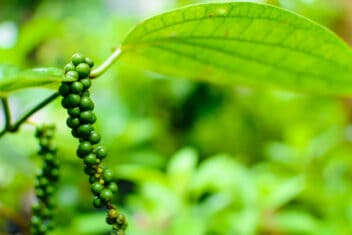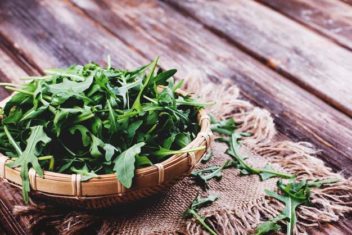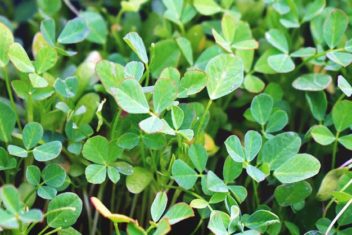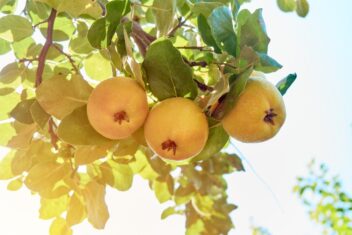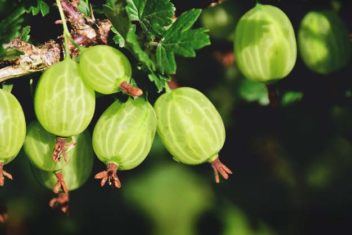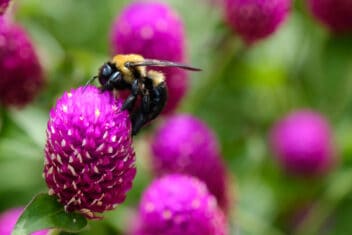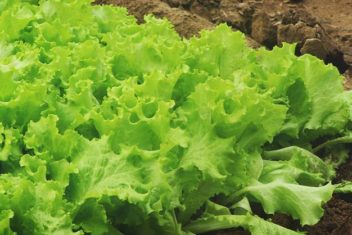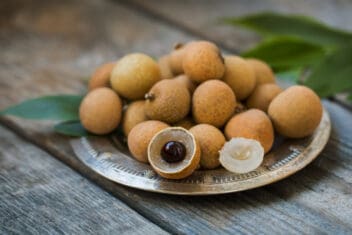You may have found your way here because you’re not entirely sure what the heck chicory is. You’re not alone. I first tried chicory in a community supported agriculture basket a few years ago. I’ve been gardening for a while, and I’m a pro shopper of the supermarket’s vegetable section, but chicory was something new for me.
I stared at the lettuce-looking bunch for a while before calling up my mom to ask her what the heck I was dealing with. My CSA basket contents are typically described in French since I live in a primarily French-speaking province in Canada, so when I saw ‘laitue de pain de sucre’ I was confused. The direct translation is something like lettuce of sugar bread, but I knew that couldn’t be right.
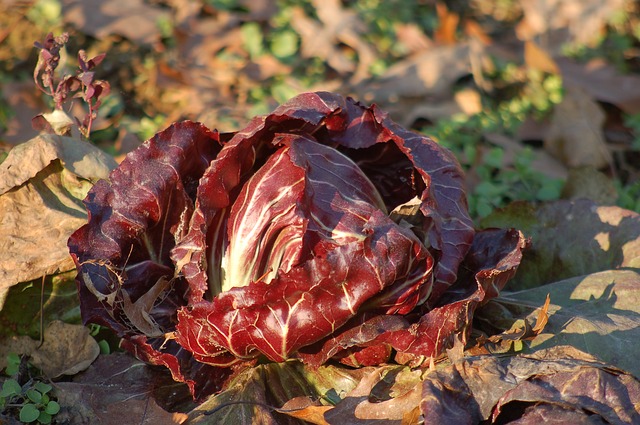
My French-speaking mother had no idea what kind of mysterious new vegetable I was dealing with. So I went on an internet hunt and found out what I had in the fridge was called ‘sugarloaf chicory.’ It’s a variety of chicory that looks a lot like romaine lettuce, but it grows exceptionally well in cold climates and tastes somewhere between bitter and sweet.
I decided to roast the sugarloaf chicory with a bunch of other wintry vegetables for a power bowl. The result? The caramelized chicory became deliciously sweet as it cooked in the oven. After that, I was hooked. The process of growing this plant is similar to lettuce, so if you’ve grown that, growing chicory should be a cinch!
Below, you’ll find information about growing chicory, the different varieties, and a few tips for how to grow the particular type of chicory called witloof (also known as Belgian endive). It’s a bit tougher to raise, but well worth the effort!
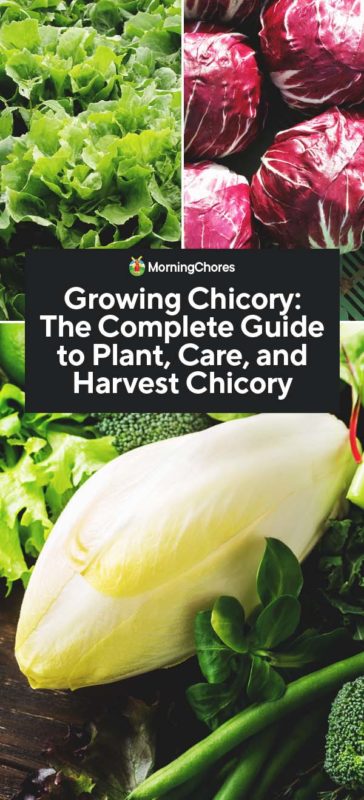
Chicory Varieties
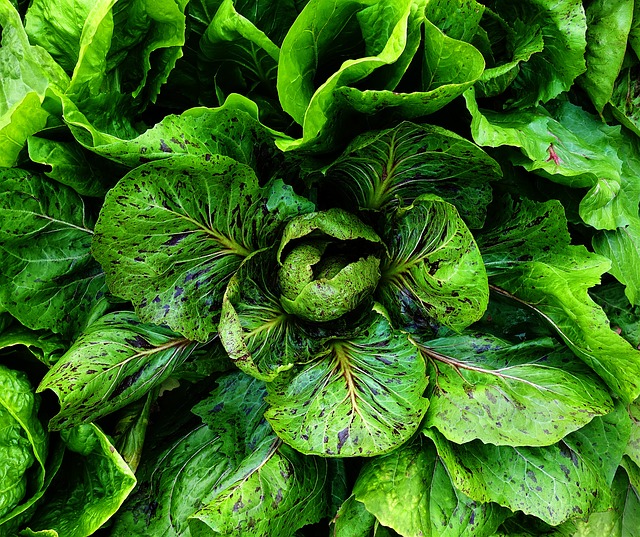
The most confusing part about growing chicory is distinguishing between the different varieties. Chicory is the name of a family of plants that include endive and radicchio. Here’s a breakdown of the different types within this plant family:
- Endive: there are multiple varieties of endive including Sugarloaf. It’s also one of the easiest chicory plants to grow. I once had a curly endive volunteer plant grow in a container on my balcony. It sounds like a total fluke, but I think a seed must have escaped its packet or perhaps an endive seed randomly found its way into another seed packet entirely. Curly varieties of endive are also known as frisee. The curly varieties are usually milder in flavor and often used in salads.
- Witloof: This type of chicory is also known as Belgian endive. It’s the hardest to grow because to get that delicious tight, crunchy set of blanched leaves, a period of forcing is required.
- Radicchio: A little more challenging to grow than endive and is available in gorgeous deep red varietals. It’s the most bitter of all chicories.
- Escarole: You may also see seeds for a plant called escarole, which looks a heck of a lot like lettuce. Escarole is a type of endive with broad leaves. Instead of curly leaves, they’re smooth. Like curly endive, escarole also offers a mild flavor profile.
Here are a few varieties of each type of chicory:
Radicchio
- Palla Rosa: This is a gorgeous Italian-type of radicchio that features fuschia-purple heads that are suitable for leaf and head harvesting.
- Fiero: An F1 variety with conical heads that are a blend of purple and green. Stores well compared to other varieties.
- Leonardo: Another F1 variety that produces large round purple and white heads that are about 4-5 inches in diameter.
Endive
- Frisee: This is a variety that ended up randomly growing in a container on my balcony. It grew exceptionally well without an ounce of supervision. It looks a lot like lettuce but is extremely bolt-resistant. Frisee makes an excellent addition to salads.
- Early green moss curled: Another frilly leafed variety. This type of endive is an heirloom type. It produces sweet leaves.
Belgian Endive (or Witloof)
- Totem: This is the ideal type for forcing uniform heads. It stores well, which makes it easier to stagger forcing.
Escarole
- Broadleaf Batavian: This type gets about 12-inches high and matures in about 80 days. It has a crisp, mild flavor.
- Natacha: This variety is not only a reliable producer, but it’s beautiful as well. It’s resistant to bolting, bottom rot, and burn.
- Eros: This escarole features dense, heavy heads of dark green leaves. Tasty in salads or sauteed.
Planting Chicory
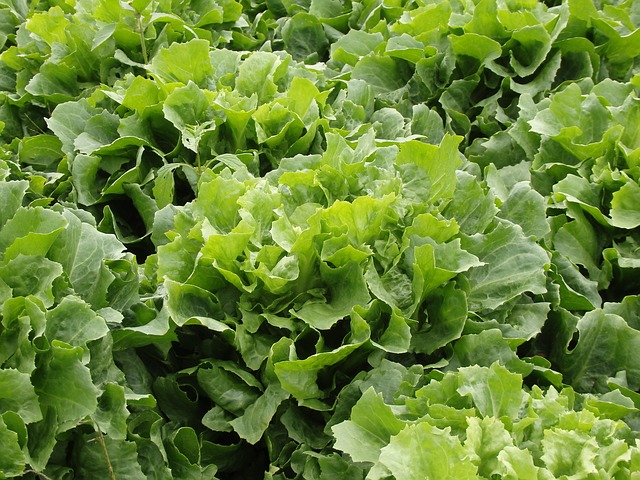
Planting radicchio and endive is relatively straightforward. Both are cool-season vegetables but should be protected from frost to prevent crop damage. Belgian endive, however, is grown a bit differently, since it requires a period of forcing.
Growing Zones
Most chicories are perennial but grown as annuals. They thrive in zones 3-9.
Soil Requirements
Chicory requires loose, fertile soil to thrive, but it can handle anything from sandy to clay soil as long as it’s well drained. It prefers a pH between 6.5 and 7.2. Work in several inches of aged manure into the soil before planting.
Sun Requirements
Growing chicory needs full sun, but it can handle a little shade.
Starting Chicory
Start chicory indoors approximately 2-4 weeks before the last frost date. Germination may take as long as two weeks. Start seeds indoors 15 weeks before the first frost date for a second fall harvest.
Seeds may also be direct sown in the spring and again in late summer for fall harvest in cooler areas. Hot weather will cause chicory to go to seed.
Plant seeds 1/4 inch to 1/2 inch deep.
Witloof varieties have a longer growth period because they have two stages of development. The first harvest provides a leafy head that looks much like lettuce and the root at this time is also harvestable. If you re-plant the root, however, it produces a tight bunch of foliage that’s known as Belgian endive.
Transplanting
Harden plants off for 1-2 weeks before putting them in the ground. You can transplant seedlings 5-6 weeks after starting, or once the plants have 5-6 leaves.
Container Growing
My favorite way of growing chicory in my garden is in containers. In my experience, it does quite well in containers that are at least 10-inches wide in diameter. As long as I’m careful not to let the soil dry out completely, I’ve never had much trouble growing it.
Spacing
Give plants 9 inches between each other and between rows.
How to Force Chicory
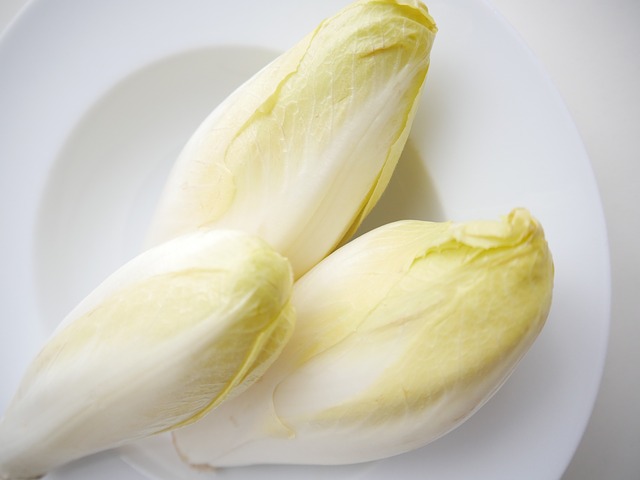
Witloof or Belgian endive is grown primarily for its tender conical heads, also known as chitons. Oddly, the only way to obtain the chitons is to force them. Forcing involves a period of rapid growth in a dark location. The fast growth results in a sweeter head (many endive plants tend to be bitter).
Forcing is usually done indoors and starts with a full grown chicory plant’s roots. Grow the witloof varietal as you would other types of chicory, and once things start to cool off in the late fall and early winter, it’s time to dig up the roots. The roots may be stored until you’re ready to force them. Keep them in a cool area, free of moisture.
When you’re ready, plant the dug up roots in pots (choose ones that are at least 10-12-inches in diameter). Cover the containers to keep things dark, but if you don’t want to do that, a dark room will do in a pinch. Keep in mind that it’s essential that no light be allowed to reach the plants.
The forcing process takes about a month’s time.
Caring for Chicory
Watering
Make sure to water evenly throughout the season. Too much water, however, should be avoided to prevent rot. Don’t let chicory dry out entirely, either. Plants need 1 to 2 inches of water per week.
Weeding
Keep weeds away from your chicory plants. Weeds tend to outcompete chicory and spread disease, which is why you should focus on removing them immediately.
Mulching
In hot, dry climates, mulch to conserve moisture so that your plants don’t dry out.
Fertilizing
Apply a nitrogen fertilizer about a month after your chicory plants have been transplanted outdoors. Don’t overfertilize, though, it may lead to weak root growth and misshapen heads.
Succession Sowing
Stagger your plantings for a continuous harvest and store witloof roots for successive forcing during the winter months.
Problems with Growing Chicory
Excess water and rainfall may contribute to plant rot, which is why you should cover container plants in rainy weather. That said, they can also suffer stress if they get too dry, which can lead to other pests and diseases.
Downy Mildew
Downy mildew attacks brassicas, melons, peas, and chicory. It’s most common in humid areas because the fungal spores need water to grow and spread. It shows up as white, yellow, or brown spots on the upper sides of leaves and as gray mold on the underside.
Avoid this fungus by keeping plants well spaced, and your garden weeded to improve air circulation. Water plants at the base, not overhead, and water in the morning. Be sure to rotate your crops and remove any infected plants.
Fusarium Wilt
This fungus shows up as water-soaked lesions on growing chicory leaves, which will eventually turn yellow. It’s spread by high temperatures and water. Sterilize your tools between use to avoid spreading the disease, keep your garden weeded, and control insects, which can spread the disease.
Anthracnose
The anthracnose fungus causes grayish dry spots on leaves, which can become necrotic. Be sure to rotate crops, keep weeds at bay, water at the base of plants and remove infected leaves.
Bacterial Soft Rot
This bacteria causes water-soaked lesions that can sometimes ooze a slimy liquid. Rotate crops, avoid damaging plants while weeding or harvesting, and only plant in well-drained beds.
White Mold
If the exterior of your chicory starts to wilt, spreading to the center until the entire plant starts to collapse, you might have white mold. Look for white, thread-like fungus on the leaves. The usual tips apply for controlling white mold: rotate crops, control weeds, and give plants plenty of space. You can also use an organic fungicide if you catch it early enough.
Snails and Slugs
Slugs and snails nibble irregular holes in the edges of leaves. Controlling them requires a two-step approach. First, remove areas where slugs live, like weeds, under sheltered rocky areas or on organic trash in the garden. Then, spread eggshells or oyster shells around plants, hand-pick any slugs or snails you see, or use a pet and child-safe bait.
Damping Off
Damping off causes seedlings to die or wilt. It’s caused by a fungus and is particularly common in waterlogged soils. There are lots of steps you can take to prevent and control damping off.
Aphids
Aphids attack just about every plant out there. You’ll spot the tiny pests on the undersides of leaves. They suck the life out of plants, attract fungi, and spread disease, so don’t ignore them.
You can prune off infected leaves if you have a small infestation. If you have a larger infestation, spray the pests off of plants with a blast of water and then treat your chicory with neem oil or insecticidal soap.
Flea Beetles
Flea beetles are tiny little pests that hop from leaf to leaf. They nibble shotholes into chicory plants and can cause stunted growth. Use row covers and trap crops to protect young plants. You can also sprinkle diatomaceous earth around plants and spray them with neem oil.
Cabbage Loopers
Also known as inchworms, cabbage loopers eat holes in plant leaves. Hand pick the pests from plants and encourage natural predators.
Leafminers
Leafminers nibble tunnels through chicory, which can discolor and damage leaves. You can use blue sticky traps to stop them. You can also encourage natural predators, plant trap crops like columbine and lamb’s quarters, or use a Spinosad spray on them.
Thrips
Thrips can distort leaves or cause silvery stippling. They can transmit viruses. Use an organic insecticide to control them.
Companion Planting with Chicory
Best Companions
Some of the best companions for the chicory family include other greens, like:
- Mizen
- Mustard
- Lettuce
- Tatsoi
Worst Companions
Avoid growing chicory plants next to:
- Peas
- Beans
Harvesting and Storing Chicory
Plants mature between 85 and 100 days, but you can harvest them for young leaves after 60 days.
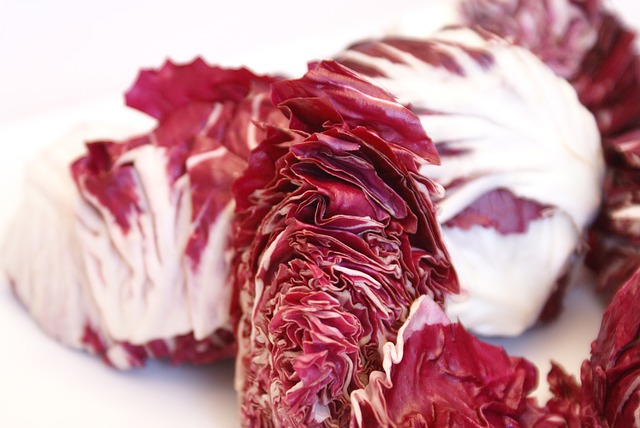
Both the root and the leafy portion of chicory are harvestable. Some varieties can also be harvested as a cut-and-come-again crop.
Re-plant the root to produce tight-leafed endive. The process is described above. Roots may be stored in a cool, dry place until you have the time to plant and force growth of chitons.
Once you harvest chicory heads, store in the fridge wrapped in a cotton cloth for approximately a week.
The most popular use for chicory is in salads. Add curly endive or chopped Belgian endive to a big green bowl of mesclun mix to add texture and a bit of crunch and bitterness.
My favorite way to prepare endive to caramelize it by either roasting or grilling it. Sprinkled with goat cheese and nuts, it makes a delicious lunch!
While it’s a lesser-known garden vegetable, you should definitely consider growing chicory this season. Curly endive, radicchio, and escarole are an excellent alternative to salad greens in the hot summer months. If you’re regularly dealing with bolting lettuce, planting chicory may be the answer to your salad cravings!
Have you ever grown chicory? Were you confused about the different varieties before reading this? Still confused? Let us know!


